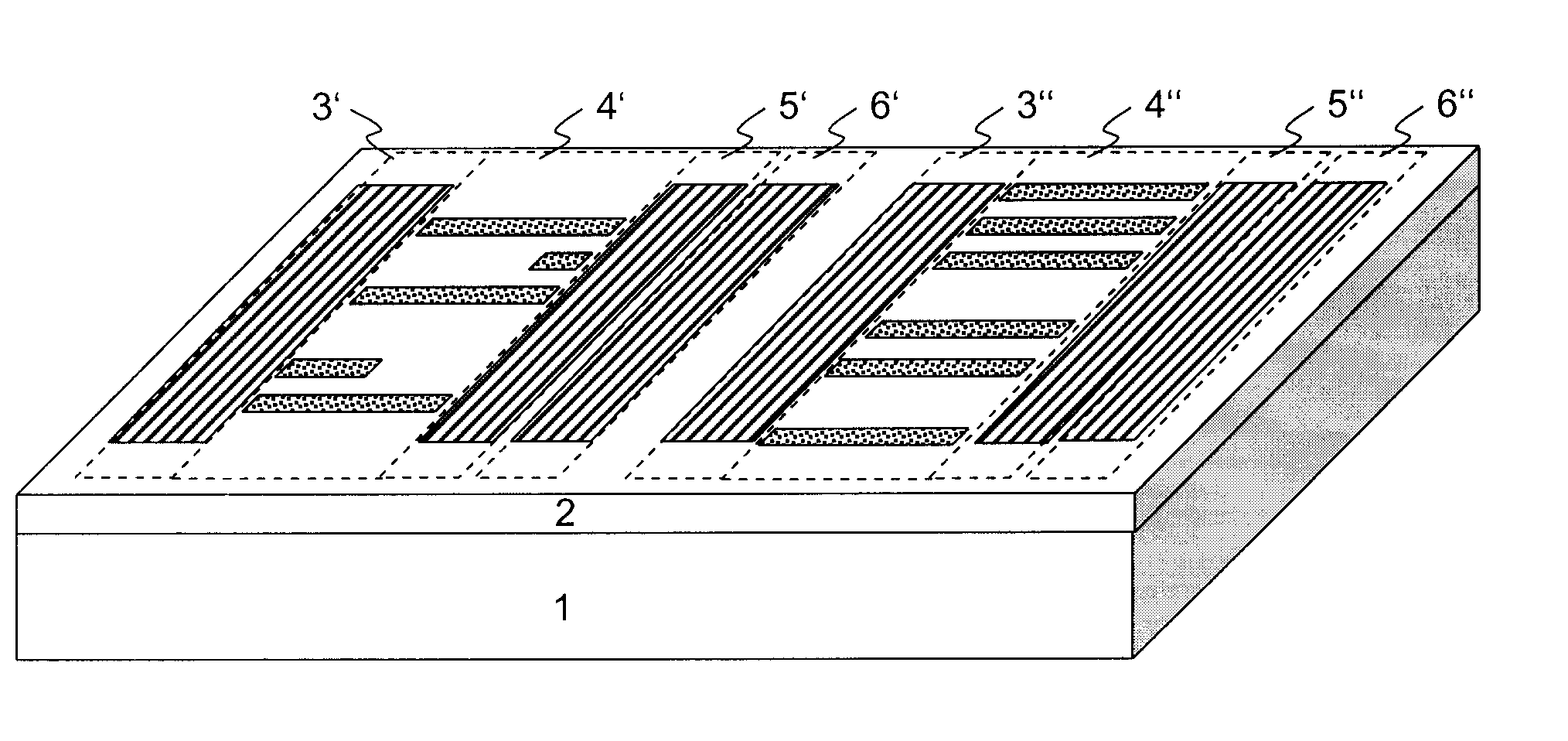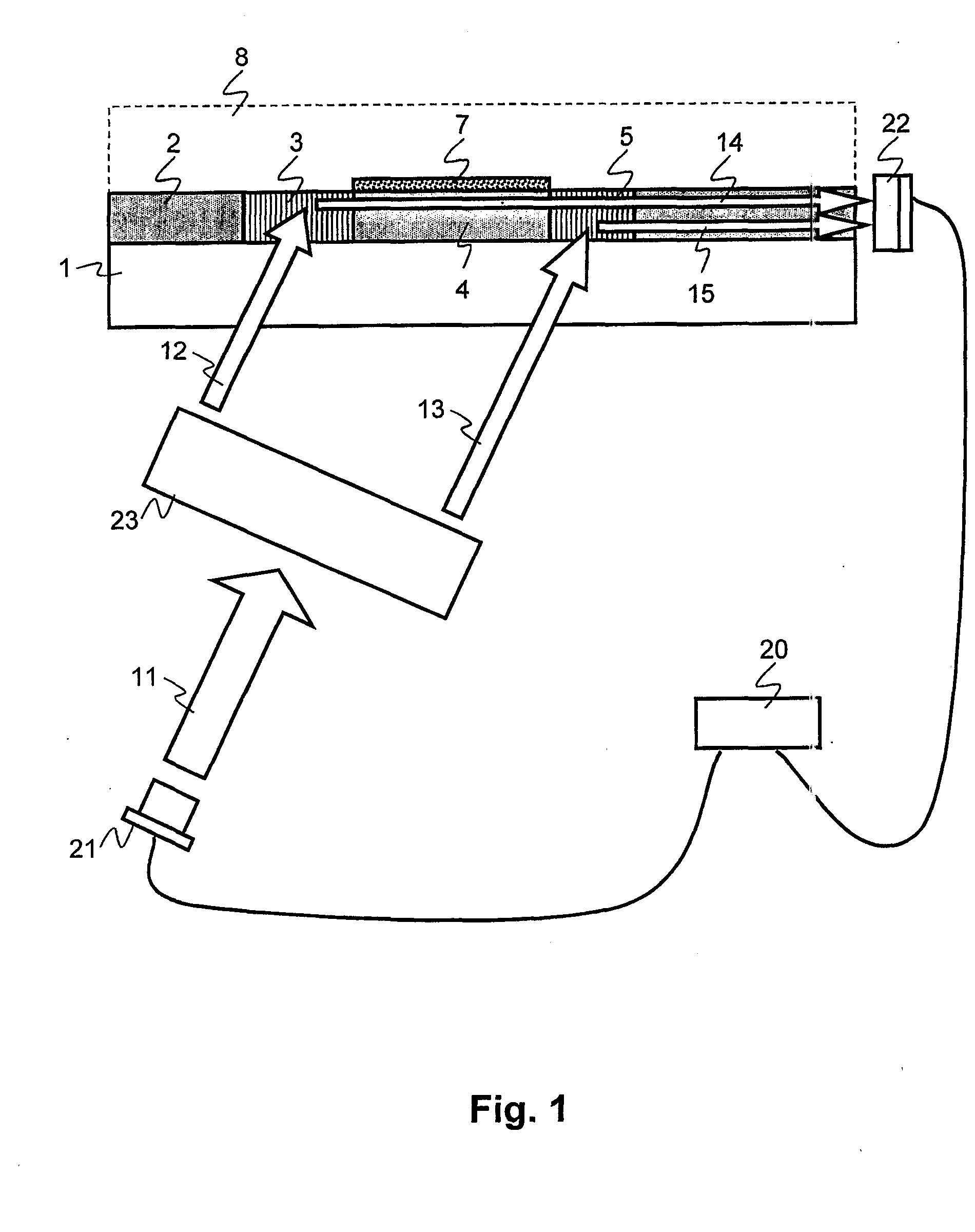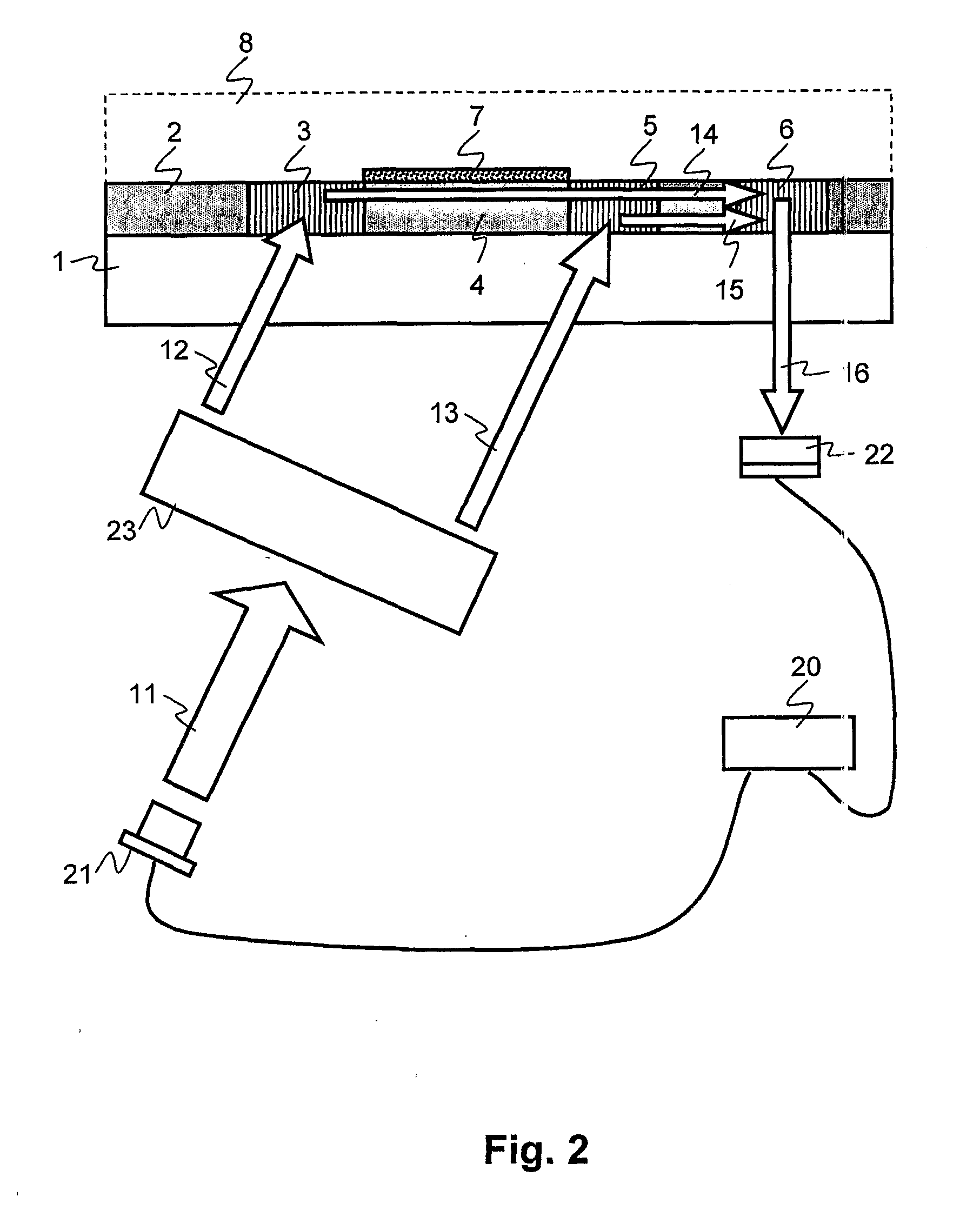Integrated optical sensor
a sensor and optical sensor technology, applied in the field of integrated optical sensors, can solve the problems of increasing the cost and the required measuring time, the difficulty of offering the sensor platform in a micro-titer plate format, and the primary sensitivity of the sensor, so as to achieve high and adjustable sensitivity, low cost per measuring point, and high readout speed
- Summary
- Abstract
- Description
- Claims
- Application Information
AI Technical Summary
Benefits of technology
Problems solved by technology
Method used
Image
Examples
Embodiment Construction
[0046]FIG. 1 illustrates a cross section of a sensor and corresponding light paths. The sensor comprises a light source (21), which irradiates illumination optics (23). The light source (21) is preferably a diode laser with a wavelength from 400 nm to 800 nm, but preferably with a wavelength of 635 or 650 nm. The illumination optics (23) divide the beam into two parts, namely a sensing beam (12) and a reference beam (13) which are incident on incoupling regions (3, 5) of the waveguide (2) preferably through a substrate (1). The sensing beam (12) excites a sensing wave (14) in a waveguide (2) through a first incoupling region (3), the former subsequently traversing a sensing area (4). The sensing area (4) is provided with an additional layer (7) which can bind a (bio-) chemical substance from the analyte (8). The analyte (8) can be either a liquid or a gas. Through the second incoupling region (5) a reference wave (15) is excited in the waveguide (2) by the reference beam (13). The s...
PUM
 Login to View More
Login to View More Abstract
Description
Claims
Application Information
 Login to View More
Login to View More - R&D
- Intellectual Property
- Life Sciences
- Materials
- Tech Scout
- Unparalleled Data Quality
- Higher Quality Content
- 60% Fewer Hallucinations
Browse by: Latest US Patents, China's latest patents, Technical Efficacy Thesaurus, Application Domain, Technology Topic, Popular Technical Reports.
© 2025 PatSnap. All rights reserved.Legal|Privacy policy|Modern Slavery Act Transparency Statement|Sitemap|About US| Contact US: help@patsnap.com



